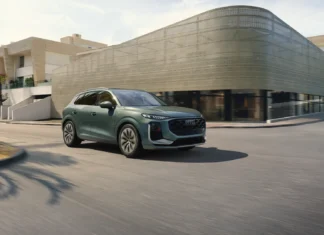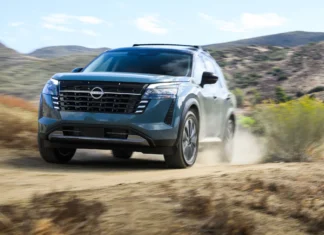As TFL’s resident Mazda fanboy, I made a big decision…and didn’t buy a Mazda.
After we published one of our latest videos recreating the Subaru Outback test that put us in…well, let’s say a precarious relationship with Subaru, you may take a look at this post and be scratching your head a bit. With all the history, why on Earth would I put a fair chunk of my own money down (I’ll explain how much in a minute) and pick up a WRX over all the options?
While I certainly don’t want to focus on that history here, TFL Studios’ longstanding situation means I haven’t had a proper opportunity to test any Subaru WRX, let alone this VB generation that first went on sale for the 2022 model year. Oh sure, I still wanted to initially cover the news when it first hit the scene — it is one of Subaru’s most iconic cars, after all — but we, as a company, have largely refrained from discussing it at every opportunity, including 2024’s TR and this year’s tS. So I am late to the party, I’ll admit, but I hope you’ll join me as I discover the ins and outs of this generation and give my impressions of the overall experience over the coming months…and probably years.
This is more of a quick-fire first impressions than a deep-dive review, since I did just purchase the car over this past weekend. For the folks thinking about this latest WRX and maybe pulling the trigger themselves, I’ll include more detail impressions at the major milestones to help you out determining whether it’s a good fit, at least in the context of buying the “normal” variant rather than the hardcore, nearly $50K model.
So, exactly which WRX are we talking about?
When I shopped around, I landed on this 2022 WRX Premium model for sale at Ferguson Buick GMC in Colorado Springs, Colorado. To be clear, this is not a sponsored plug by any stretch, but I did want to name drop the business — and specifically Tyler, the salesman — for the friendly staff and the purchase experience. The dealer took this Subaru as a trade in toward a new GMC SUV. After reviewing the vehicle history and taking it out for a spin, the previous owners took exceptional care of the car in the 26,500 miles they owned it before I came in to buy it.
All told, this three-year-old Subaru WRX set me back $26,879, plus sales taxes and fees. The previous owner was even kind enough to have the windows tinted, the STI OEM short throw shifter installed and swapped out the stock Dunlop SP Sport Maxx GT600 A summer tires for a set of Continental ControlContact Sport SRS+ performance all-seasons (while leaving the OEM rubber).
At first brush, this car offers a lot of performance for that kind of cash. Keep in mind, we’re talking about the same price for this lightly-used example as a new, loaded Nissan Sentra SR. Nothing against the Sentra, as it is definitely a solid everyday commuter for the money, but this WRX brings all-wheel drive capability, a 6-speed manual transmission and 135 more horsepower to the table.
Now, I get that used Sentras of the same vintage will cost significantly less, but my point is to measure my new-to-me WRX’s value against buying brand new. And on that front, this route wins out handily even buying the Subaru brand new. Step into a dealership, and you may be staring down a $38,920 MSRP for a 2025 WRX Premium (now the base model). And prices only stretch northward from there, with the balling-ist tS model commanding a $48,875 investment for the Brembo brakes, STI-tuned suspension with adjustable dampers, high-performance tires and Recaro seats.
Let’s talk about performance for a minute…because it has its pros and a couple cons.
At 271 horsepower and 258 lb-ft of torque, the latest VB-generation WRX’s 2.4-liter FA24F engine produces a little more grunt than the old car, but it isn’t a huge upswing considering the higher displacement thanks to a wider cylinder bore. Against the 300-horsepower, all-wheel drive Toyota GR Corolla or the 315-horsepower Honda Civic Type R, as well as the Hyundai Elantra N (276 hp) and Volkswagen Golf R (328 hp), those figures aren’t too impressive on its face. At 320 lb-ft, Mazda’s turbocharged 3 hatchback is the on-paper torque king as well…and yes, I did just need to mention that.
There are a couple factors that lean in the Subie’s favor, though. The first, at least with my short time in the car so far, is the relatively smooth power curve. It’s not monstrously powerful in stock tune, sure, but what struck me right off the bat is just how easy it is to get settled into driving the WRX. The clutch is nicely weighted to feed in what power is available off the line, and with the low-end torque, it feels like there’s a nice, refined surge of power as you row through the first couple gears. I know, plenty of folks out there say the stock power output sucks, but that’s where another high point comes in: aftermarket support.
If and when you do get tired or the stock map and want to leverage the overhead Subaru left in this engine, there are a dizzying number of tuners and parts suppliers out there to make it happen. That is part of what drew me to this car and out of my safe space with Mazda, as readily finding tuning support for the latter is tougher than it used to be. Anyone else miss the Mazdaspeed days?
Don’t mind the fuel economy (or if you do, get something else)
Right off the bat, I was impressed by the WRX’s handling chops. Thanks to being one of the few remaining all-wheel drive options in the segment and having a firm, but well-composed suspension setup with lightning-quick steering, and this car corners like it’s on rails. As I mentioned with my previous Mazda 3 hatch, I still cannot understate the importance of good tires with any car, but setting up high-performance rubber is easily one of the best upgrades you can make, depending on your circumstances.
The downside when it comes to the Subaru WRX, as you might have worked out from the EPA figures…is fuel economy. Subaru claims 19 city / 26 highway / 22 combined mpg. Go for the 6-speed manual and you can game that a bit, to the point where my fuel mileage so far lands between the 24-26 mpg range, at least in a few hundred miles of mixed driving. As if you need a reason to avoid the CVT with this type of car, the official EPA rating is technically even worse, so as thirsty as this car can be…yeah, it’s still worth going for the manual.
It’s undeniable there are better performance cars in the class if you’re looking for smiles and miles per gallon. The Volkswagen Golf R is one of those examples, as it can manage 25 mpg combined and up to 31-plus mpg on the highway. Most of the other options in the class are either (A) front-wheel drive, or (B) significantly more expensive (even used, like the Golf R) compared to the Subaru, however. So it all depends on your preferences and where you’re willing to compromise.
The WRX checked off the most boxes for what I convinced myself I want
Over the years that I’ve been with the TFL team, I’ve had the awesome opportunity to try out pretty much every new vehicle hitting the scene. At least, most vehicles that we ordinary mortals can actually afford…though I can’t lie, the occasional supercar is always a blast. But I obviously haven’t tried out many of Subaru’s latest offerings, so that was part of the reason behind my latest purchase. While I loved my Mazda and the Honda Civic Type R is awesome, to say nothing of all the other options out there, I did want to try out something different, at least from my perspective, and report on the experience (belatedly, I admit) for you guys.
Three other major factors bubbled up to the top for me, though. While I’ve kicked the idea of an EV back and forth over the past few years, I’m not quite ready to give up the manual transmission just yet. That was a huge factor for me, and so far, this WRX is scratching that itch perfectly.
Second: I wanted that manual to come coupled with all-wheel drive. Yes, you absolutely can manage through winter with front-wheel drive so long as you get good tires, but if you have good tires and AWD, then that ought to be a fun combination when we get our first flurries in a few months. Springing for the manual/AWD combination did wonders to narrow down my list, because you’re pretty much stuck with either the Subaru WRX or the Volkswagen Golf R. And while the Golf R is fantastic, holy crap is it ever expensive. VWs with similar mileage command about $13K-15K more than what I wound up paying here…so that put it well out of my budget for the time being.
If you’re saying, “Wait, what about the Toyota GR Corolla?” It’s a similar story, unfortunately. They haven’t been on the market long enough to get more affordable, so they’re also in the $35K-$40K range with similar mileages.
Along similar lines to the VW, Toyota and all the others though, I wanted something fun that would also see me through the next few years as a solid daily driver. Going into this, I have obviously heard the hubbub that this VB isn’t as hardcore as some of the past generations, and it’s lost that sort of edge you used to get in past generations. I may just be getting older (and more boring), but a well-rounded performer actually fits my current mood just about perfectly.
Good decision? Maybe a bit too early to tell…but it’s been fun (and practical enough) so far
Overall, I’m feeling this Subaru WRX is great, affordable fun that will keep me smiling for a long while to come. Upgrades are naturally going to be part of the process of course, from quality-of-life tweaks to performance upgrades at some point down the road. Keep in mind this is my personal car, so I need to spread out the financial hits a little bit.
Speaking of financial hits, is the WRX worth it at nearly $40,000 and up? Right now, that is a tough number to digest, and I’m worried for the car’s future. Even if you aren’t a fan, more choice in the market is a benefit for buyers — and things aren’t looking so hot for Subaru’s performance flagship. Not only are sales down by 35% this year (and July sales were absolutely woeful, at 66.6% down versus the same time last year), but tariffs pushing the prices higher could have even more profound impacts in the months to come.
In the meantime, though, I’ll keep you posted on how the experience is going so far (including a more comprehensive review), and we’ll have a broader look at the market when the next round of quarterly sales reports are out in October.






















